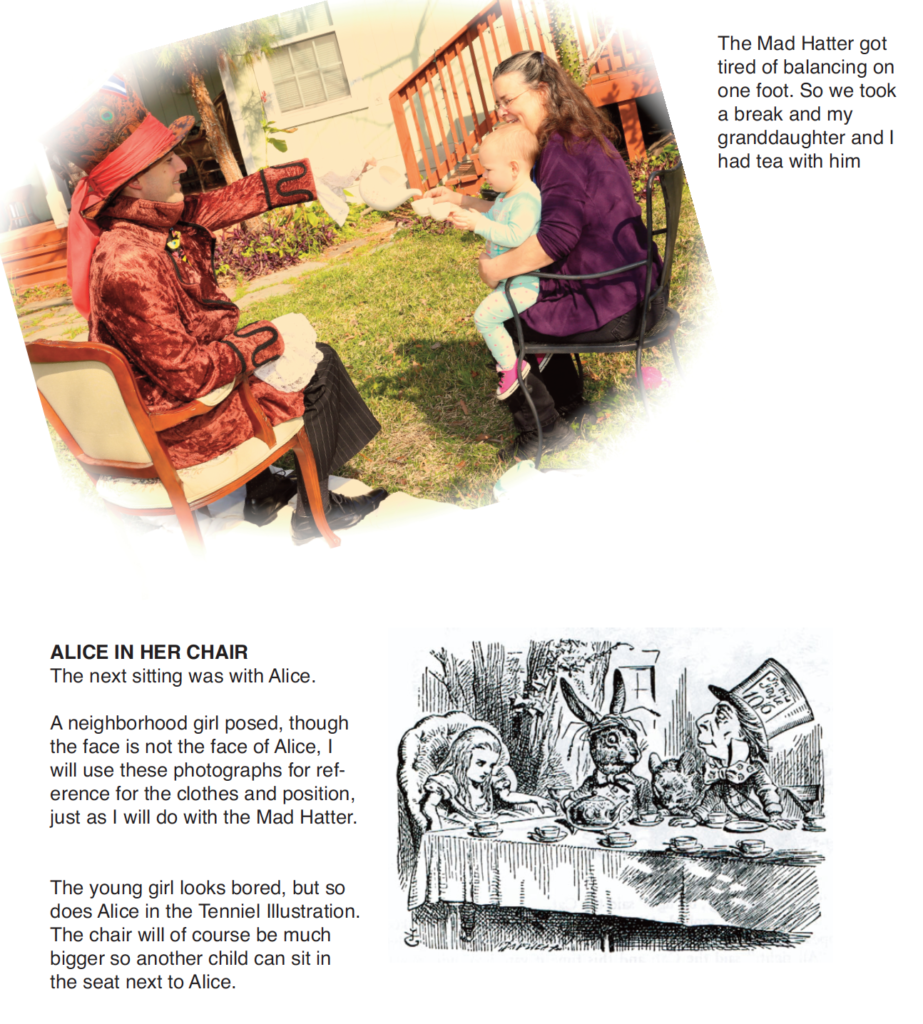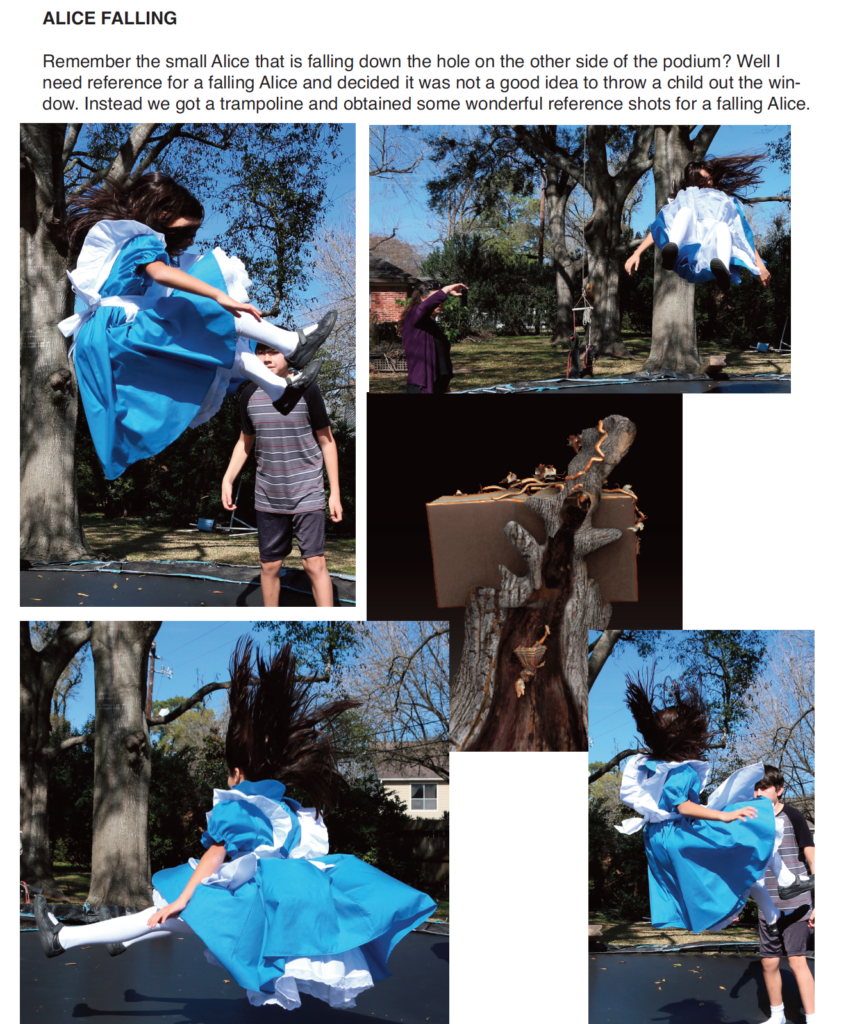Posts by admin
Eve test post

TO COME: MORE PROCESS PHOTOGRAPHS, AND VIDEO ON THE CREATION OF EVE.
It was not long ago that my sculpture of Eve was installed at Generation Park. We never got to have a dedication because of the virus. Then, my client sent this email that came from the CEO of Apache Industries, who apparently is housed in the building where Eve is. It lightened my heart. There are so many stories behind this sculpture. Many are miraculous to me. One day I hope to share.
Hello All,
As we approach the Holiday weekend I cannot help but feel that regardless of creed, race or religion the celebrations of Easter, Passover, Ramadan etc… seem to take on a more elevated meaning in this moment. The Christian faith practices Lent, which importantly involves some form of personal sacrifice, self-denial and penance for the 6 weeks leading up to celebration of resurrection on Easter Sunday. In the Jewish faith Passover and the Seder celebrates the holy spirit “passing over” the marked doorposts of those who would otherwise be inflicted by the last of the 10 plagues preceding the Israelites escape from slavery. And in Islam, Ramadan (albeit a couple weeks away) is a month of fasting aimed at cleansing the soul and encouraging self-discipline, empathy for others less fortunate, generosity and compassion.
How fortuitous is it that we all find ourselves battling a pandemic (plague), while at the same time, we find ourselves making great personal sacrifice of the comforts, freedoms or indulgences that are typically available to all of us, and it is our reliance on our collective self-discipline and humanity to find a pathway to salvation? In this moment, when we all learn to do without in the face of adversity, I can’t help but feel re-centered on the things that matter most—my family, my friends and my colleagues.
Each day at the office, I look out the window onto Redemption Square (also a biblical reference). Installed in the middle of the square is a 15-foot tall statue of Eve. The curator told me that the statue is an image of Eve, later in life, head tilted towards the sky, arm and open hand raised high, reaching for the Heavens in search of redemption from God. To me, the image is an extraordinary symbol of perseverance, tenacity and hope.
However, every time I look at Eve, I also cannot help but visualize the statue taking motion and watching that outstretched open hand turn powerfully into raised, clenched fist—the universal representation of the underdog’s ascension, the warrior’s triumph or the champion’s demonstration of victory.
So on this holiday weekend let us all share in a moment of prayer or reflection with our families and our loved ones. Let us not take for granted the people in our lives that matter most.
And, also, let us all mark this weekend…let it be the inflection point…where our collective sacrifice, perseverance and tenacity starts to turn open hand into clenched fist.
I am always grateful for all of the Apache family!
We will triumph!
We are Apache!
Happy Easter!
MK
Michael J. Knigin
Chief Executive Officer
Apache Industrial services.
A Sitting For Mad Hatter’s Tea Party Cont.
The Documentation Of Creating a Life-Size Newsboy Sculpture
This part of Bridgette Mongeon’s blog documents the entire process of creating a life-size sculpture from start to finish. You are welcome to follow the links below, of course they will go backwards. But if you want to start from the front and go back, follow this chronological order.
Students and Teachers.
There are study materials, questions and educational material for much of the process. They are listed below.
Archives from sculptor Bridgette Mongeon and
The Texas Press Association Newsboy sculpture
To read previous journal entry click on the desired date

August 26, 2004
The News
I receive the information that I have been awarded the commission of the Newsboy for the Texas Press Association. In this journal entry I share some of passion for sculpting children and the photo of the Jesse Award created for the Houston Chronicle
Students learn about • Art and History
• Geography
August 27-30, 2004
Thoughts on The Project
• The beginning of the thought process concerning the sculpture
Students learn about • The difference between newsboy and news carrier
• The death of a newsboy • The history of newsboys in America and the Spanish American War
August 28
The Beginning
Students learn about • The first newsboy
August 31, 2004
How I Pick a Pose
• An artist’s reference, Picking a pose
Students learn about • The call of the newsboy events that happened in the last 125 years.
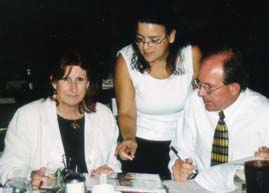
Sept 2, 2004
The Meeting
• Meeting with the Texas Press Association • Deciding on a pose
Students learn about • History of the lost wax method
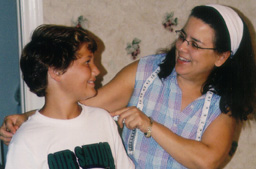
September 5-7, 2004
Beginning the Small Sculpture
• Working with a model and roughing in the small newsboy sculpture
Students learn about • The history of knickers
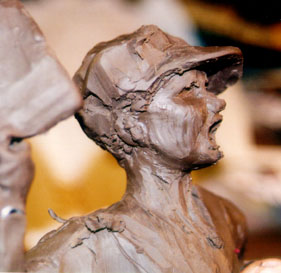
September 8-10, 2004
The Sculpting of the Small Newsboy
• Roughing in the face of the small newsboy
Students learn about • Scaling a sculpture • 3D figures of sculptures
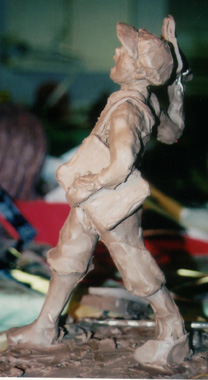
September 11-17, 2004
More Research on Clothes
and Sculpting of the Newsboy
• Researching newsboy outfit, zippers, and suspenders.
Students learn about • The newsboy strike of 1899 • the history of the zipper
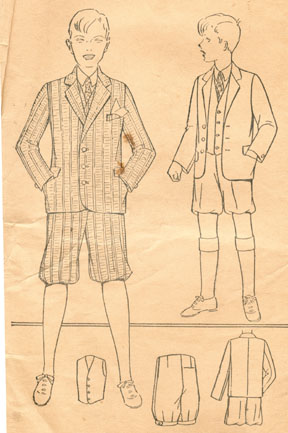
September 18-26, 2004
A Sewing Pattern for Knickers
and Sculpting Continues
• Roughing in the small newsboy, finding a vintage 1929 newsboy clothing pattern
Students learn about• How artists use proportion and measurements.
September 27-October 3, 2004-
The Creative Process
• Article Printed in the tribune • International newspaper carrier day
• Creative thinking process
Students learn about • History of the sewing machine
• Sewing a 1929 pattern for the newsboy
October 4-11, 2004-
Sculpting Tricks and More Research
• Sculpting tricks
Students learn about • Motivation with their art
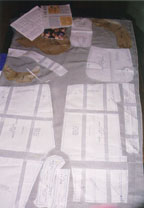
October 11-18, 2004-
Sewing a Vintage Outfit From An Old Pattern
• Sewing the outfit for the model • The final pose
Students learn about • Leisure time of a newsboy • Old toys
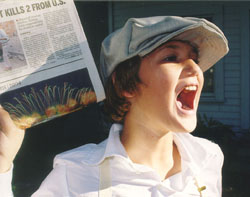
October 19-25, 2004-
The Finished Small Newsboy Sculpture
• Finishing the small sculpture • Receiving approval
Students learn about • The importance of folds and how to create them.
October 25- November 1, 2004-
Preparing the small Sculpture for the Foundry
• Preparing the small newsboy sculpture for the foundry
• A visit to the capitol building
Students learn about • Elizabet Ney and the history of Texas art • The Texas State Capitol building.
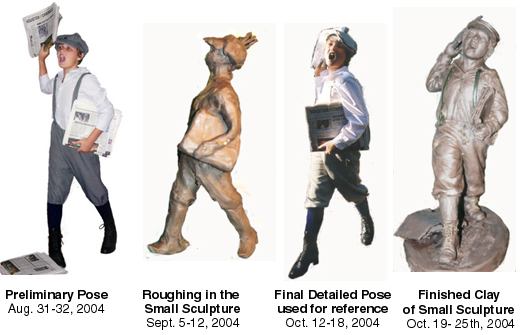
November 2-8, 2004-
Reviewing the Process of Creating
an Original Work of Art
• A review of the previous three months of progress.
• Information about copyrights and limited edition bronzes
Students learn about • Copyrights

November 9-12, 2004-
The Beginning of the Sculpting
on the Life-size Newsboy
• Beginning of the life size newsboy sculpture • Creating the armature
Students learn about • The Penny Press • Yellow Journalism • Newspaper production at the time period of our newsboy
November 13-21, 2004
The Beginning of the Sculpting
on the Life-size Newsboy cont.
• Roughing in the large newsboy sculpture.
Students learn about • How to enlarge a sculpture
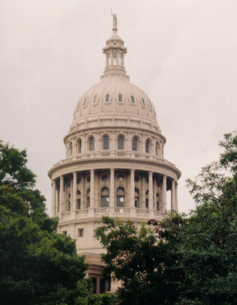
November 29- December 6, 2004 –
The Future Journey of our Newsboy
• The future journey of our newsboy
Students learn about
• The State Preservation Board
• The Texas Capitol building
• Texas Legislature • The Texas Senate
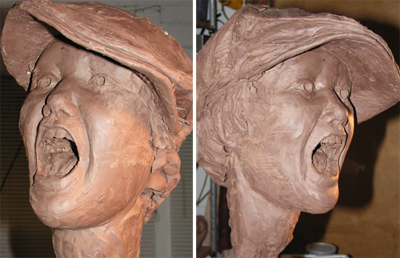
December 7 – December 13, 2004-
Frustration Of the Creative Process
• The future journey of our newsboy
Students learn about
• Newsboy Strike • The zipper
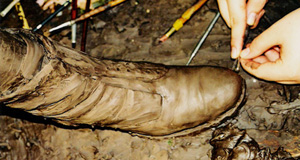
December 14 – December 21, 2004-
The Morphing of a Sculpture

December 22 – December 27, 2004
-Working Through the Holidays
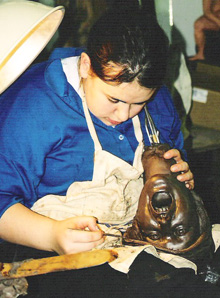
December 28- January 3, 2004-
Huge Strides In the life Size Sculpture
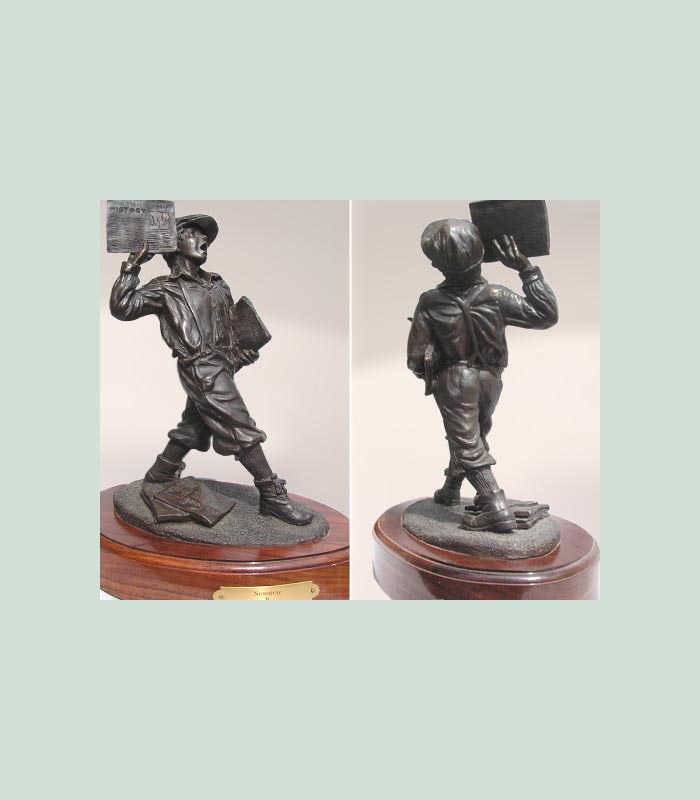
January 3-10, 2005-
Now WeAre Getting There
First small newsboy bronze • Head is added to the life size sculpture
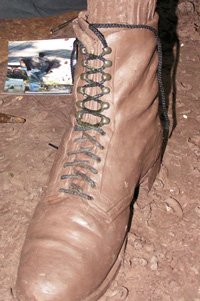
January 11-17, 2005-
Details on Life-Size Sculpture Come Together
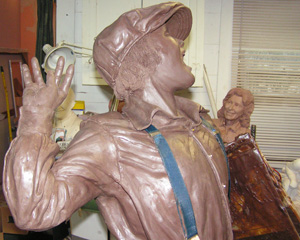
January 18-21, 2005-
Adding the Hand to the Life-size Sculpture and
Sculpting a Newspaper
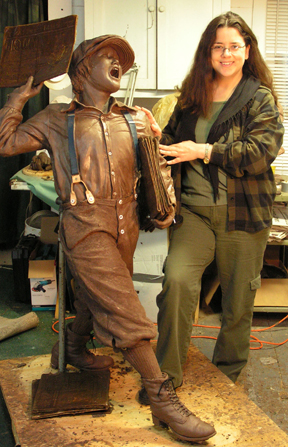
January 22-29, 2005-
Sculpting is Complete on the Life-size Newsboy
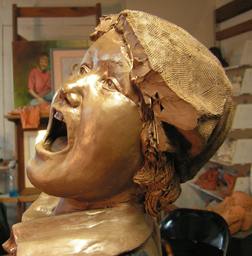
January 31-February 7, 2005-
The Mold Making Process
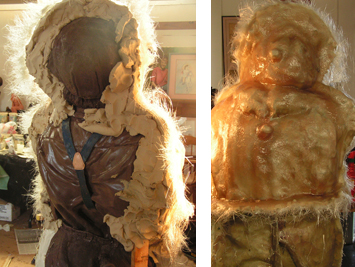
February 8-14, 2005
Mold Making Rubber and Fiberglass
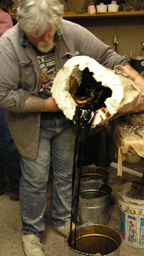
February 15-21, 2005-
Pouring the Wax
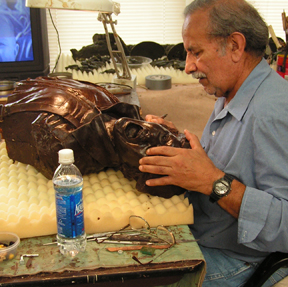
February 22-28, 2005-
Working the Wax
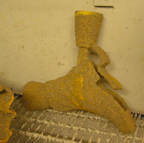
March 1-7, 2005-
The Dip. Learn about the next step in the bronze casting process – the dip.
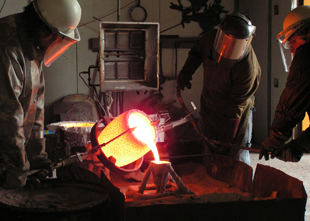
March 8-15,2005-
The Metal Pour
Students learn about • The Bronze Casting Process
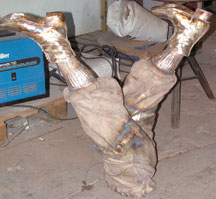
March 16-April 11, 2005-
Putting the Metal Together
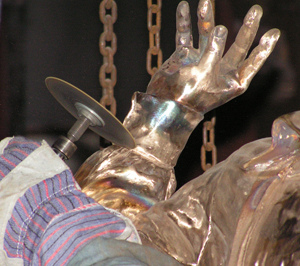
April 12-May, 2005-
Correcting the Metal
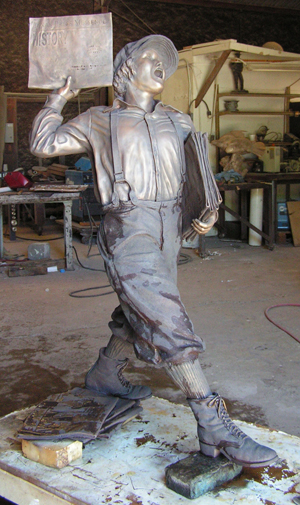
May 2005-
Completion of the Newsboy Sculpture
The newsboy sculpture is complete.
May 8 2005
Newsboy Life Size Editions.
Learn about the editions of the newsboy number one and two.
November 29, 2006
The Newsboy Placed
Bridgette visits Austin Texas and sees her sculpture installed. It is her first time seeing it.
November 28, 2006
Another Life-Size Newsboy To Be Created
For $20,000 the artist sells reproductions of the newsboy. Another paper has purchased a newspaper. They are going to pay the extra $2,000 to have the newsboy headline changed to something of their liking.
December 7, 2006
Another Order For a Small Newsboy
For $1,350 plus shipping Bridgette sends the small newsboys to newspapers all over the country. It makes a great gift for a recognition of accomplishment.
January 12, 2007
A New Life Size Newsboy
See number two in the edition of the bronze newsboy at the foundry in bronze.
May 2005- Present-
The Life Size Limited Edition
The placement of the first in the edition of ten life-size bronze Newsboys and the remaining sculptures as purchased complete with their headlines changed to reflect times in history.
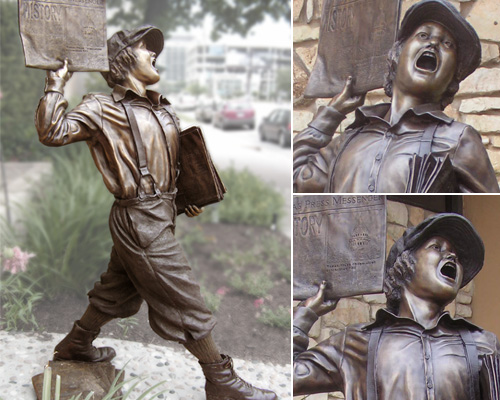
March 23, 2007
Artist Carves History In Bronze
A press release about how sculptor Bridgette Mongeon has a limited edition bronze sculpture in which she creates headlines in her bronze newspaper that match her clients inspiration.
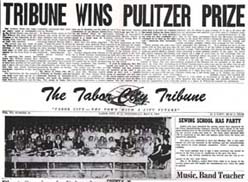
May 21, 2007
An Update on Number Two in the Edition of The Life Size Newsboy Bronze
The artist is honored that the headline for number two in the edition for this paper winning the Pulitzer for their fight against the KKK.
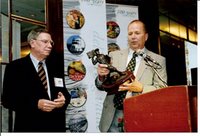
November 27, 2007
Newsboy Goes to Canada
Often people will purchase the small newsboy figurine for awards. Learn about the story of the O’Brien family and their contribution to the industry in this post.
May 19, 2009
It Is Getting Moldy Around Here- LOL
Sculptor Bridgette Mongeon searches for all of the molds of the newsboy to send to the foundry.
May 22, 2009
Body Parts About The Studio
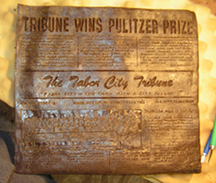
June 12, 2009
Wax Newspapers
Bridgette changes the paper that the newsboy holds to reflect a paper in the history of each collector.
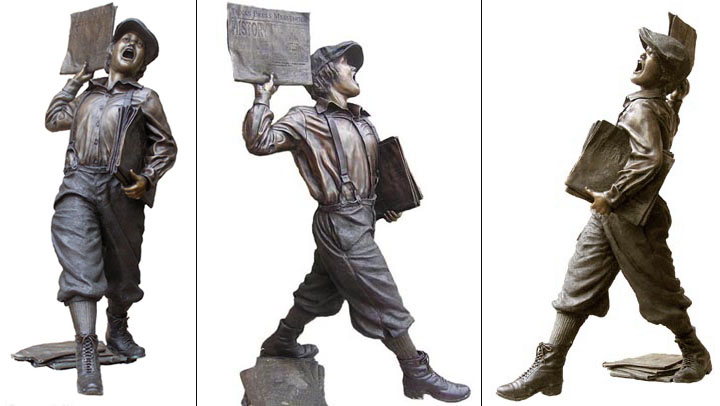
July 10, 2009
Newsboy Commemorates Journalism … Again!
Number three in the edition is sold. This time the newsboy will sell his papers in the North West.

July 21, 2009
The Newsboy Will Ship in The Morning!
The sculpture for the Tri-City Herald ships to Kennewick, Washington. Of course the artist changed the paper.
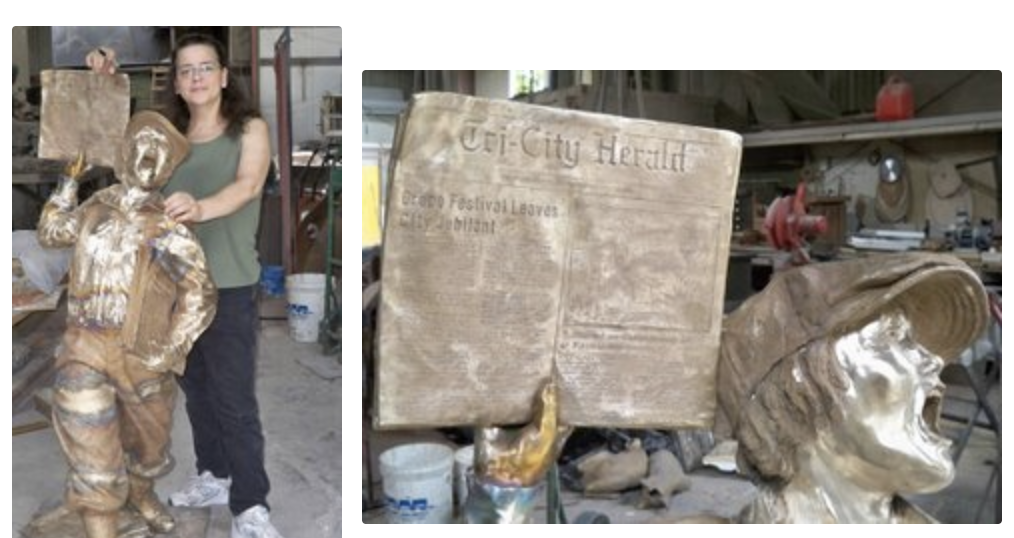
July 17, 2009
What is a Metal Check?
Sculptor Bridgette Mongeon travels to the foundry. She repeats what she has done so many times before.
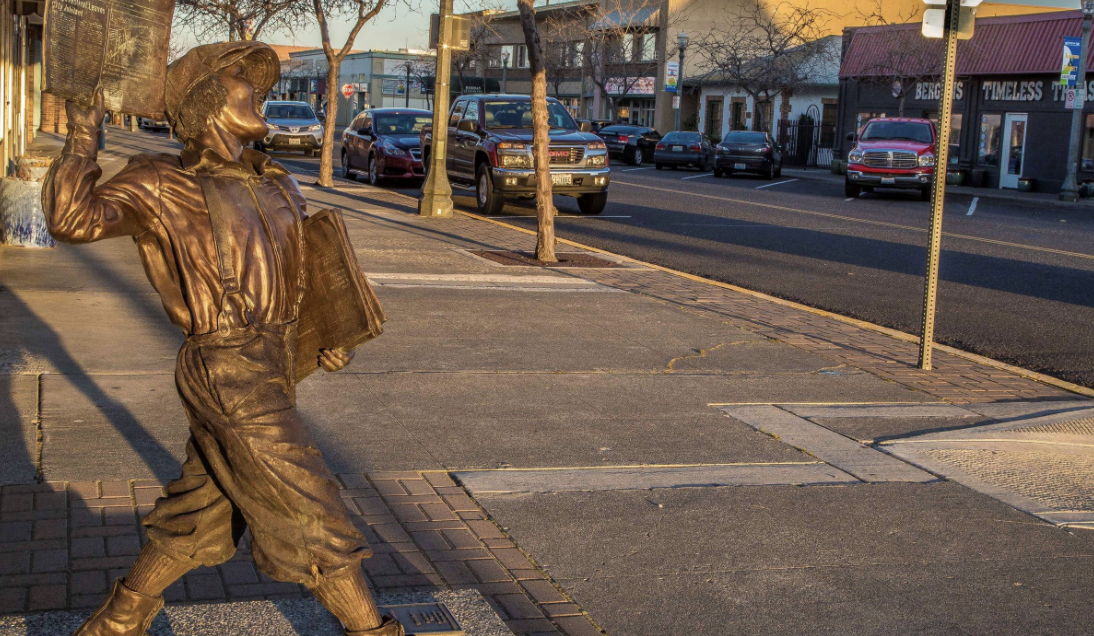
Sept 5, 2009
Recent Media on The Newsboy Sculpture
A Third Newsboy is Placed in Kennewick WA
September 5, 2009
Television Coverage of the Unveiling of the Newsboy Sculpture
Unfortunately the link was removed as of May 2020.
You Could Lose Your Rights To All The Work You Have Ever Created
Created for Best of Artists and Artisans web site
By Bridgette Mongeon © 2008

Immediate action is needed concerning the
Senate Bill S. 2913 and House Bill H.R. 5889, the Orphan Works Acts of 2008.
America is known for the country that protects an individual’s rights. It is impossible for me to comprehend that my rights as an artist may soon drastically change, and that I could lose the rights to all the work that I have ever created. When I first heard about this, it was so unbelievable that I thought that it must be a prank. But, with further investigation I found it was not. In this article I will include a little about what I found and links with other articles for readers to peruse so that they can make their own informed decision. I am also setting up interviews with several people including Copyright lawyers, those in the writers unions, and even those in the American Federation of Television and Radio artists, to name a few. There is urgency in acting and spreading this information. For whatever reason, this is moving through congress quite quickly and will affect your rights and possibly your income as a creative person.
As I find more information and create these interviews, I will pass them on to the Editors at Best of Artists and Artisans sculpture blog to be posted at their discretion. I will also post all of the information that I find on my home page blog, located at http://www.creativesculpture.com/blog
COPYRIGHT LAW AS IT STANDS TODAY
First, a few basics about copyright law as it stands today. According to the copyright law of 1976, everything that you create is protected by copyright from the moment you create it, even if it is not registered. This is the way copyright is handled throughout the world. It was defined by the Berne convention, which is an international agreement concerning copyrights.
With the current Copyright law, you do need to register your work if you want to collect for statutory damages for infringement. If, however, your work is registered and you discover someone has stolen it and you file suit, statutory damages are punitive and can be quite severe for those infringing on someone’s rights. This very idea keeps many people honest about “taking” other people’s artwork.
“It is not what it appears to be, it is a Trojan horse… Under this orphan works legislation, nothing you do would be protected unless it is registered with these commercial registries… they are orphaning all unregistered work” Brad Holland
THE CHANGE IN LAWA radically proposed change to the US copyright law allows infringers to exploit the right of copyright holders with little or no penalty according to the Orphan Works Opposition Headquarters (OWOH). “Two bills currently on the “rocket docket” would let infringers “orphan” any copyrighted work whose owner the infringer failed to locate through a vaguely defined “reasonably diligent” search. The creative arts industry, including world-renowned artists, designers, photographers, manufacturers, and licensing businesses have united to oppose this legislation.”
The New Orphans Work Act declares that nothing you do would be protected unless you register it with a registry, placing a burden of diligence on the copyright owner. It must also be stated that even though these bills are moving quite fast through congress, registries do not, at this time, exist. These would be private registries where an artist would be responsible to register their art. In other words, every artist will have to pay to own their own work and each of their pieces will have to be registered, right down to the sketches in their sketchbook. If they are not and someone comes across your work and they search these directories and do not find it, then they can say that they performed a “reasonably diligent search.” They can use your work at no cost. As I comprehend the ramifications of this, the works that are presently copyrighted would also have to be reregistered. The cost of registering each piece of artwork, nevertheless the time that it would take to register each piece of artwork throughout an artists lifetime, makes this task impossible and prohibitively expensive.
It is interesting to note the following—It is a violation of the Berne Convention for the Protection of Literary and Artistic Works for any country to impose registration on a rights holder as a condition of protecting his copyright. See Article 5(2) “The enjoyment and the exercise of these rights shall not be subject to any formality (emphasis added).”, (From How the Orphan Works Bills Affect Visual Artists. Illustrators Partnership of American)
According to some of the interviews that I have listened to a creative person would also have to police their artwork, making sure that no one has taken it or it may be considered orphaned.” It is also said that you would have to reply to all inquiries on your artwork or it might be considered orphaned. All of this hardly leaves room for an artist to create.
OWOH states, “The new bills would severely “limit” financial penalties for infringing. Opponents charge this will encourage deliberate theft because statutory damages are the only tool the law gives copyright holders to prevent abuse– and they say it works. Penalties for infringement almost certainly deter rampant abuse by making it risky. But as medical illustrator Cynthia Turner notes ‘the new bills would protect infringers by denying artists damages, incurred court costs, attorneys’ fees and other expenses.'”
“Because these bills were planned behind closed doors, introduced with little warning and fast-tracked for imminent passage, a broad-based coalition of artists and trade associations say they have had little time to respond and generate public discussion. They say that a radical change in intellectual property law should not be rushed through Congress without public vetting. They are calling on Congress to slow down this legislation until it can be subjected to an open, informed and transparent public debate.”
Those in support of this bill are libraries and educators that claim that this bill is intended to give libraries and museums greater latitude to commercialize archived works. But, according to tp the OWOH, “critics charge the bills have been drafted so broadly they would permit any infringer to commercially exploit any copyrighted work, from professional art to family photos.” Those supporting the bill say that if artwork is worth something it should be registered. But if it is not worth something why would others want to take it?
Brad Holland of the Illustrators Partnership of America comments on the bill, ‘It is not what it appears to be, it is a Trojan horse… Under this orphan works legislation, nothing you do would be protected unless it is registered with these commercial registries… they are orphaning all unregistered work”
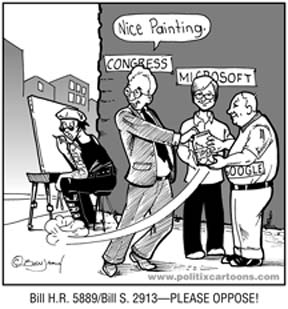
I encourage you to become familiar with the bill and take action accordingly. Your rights may be fading away without you even knowing it. If you would like to have your voice heard, The Illustrators Partnership of America has made it quite easy to take action. You can go to the web site and send an email, but faxes and letters are also encouraged. Please keep coming back for further information on this subject and send a link to this blog to other creative people that you know.
OTHER RESOURCES
Don’t take my word for it. You must decide how important this is to you. Here are some places to start.
- A wonderful resource of articles about this bill put out by the Illustrators’ Partnership
For comprehensive bill descriptions that describe the impact on visual artists:
House Bill http://capwiz.com/illustratorspartnership/issues/bills/?billid=11320236
Senate Bill http://capwiz.com/illustratorspartnership/issues/bills/?billid=11322171 - Video interview with brad Holland of the Illustrator’s Partnership
- American for the Arts on the Orphan words Legislation
- American Society of Media Photographs Update on 2008 Orphan Works Legislation
- Lawrence Lessig’s Op-Ed piece, in today’s New York Times
- Art Calendar article on the Orphan Works Act that also talks about Microsoft’s and Googles involvement.
- Public Knowledge concerning the Orphans work act
- Orphan Works Opposition Headquarters
- Plagiarism Today has several articles about the subject
- Attorney Tammy L Browning- Smith discusses the orphans works and Washington DC in her online blog Arts and crafts law
- Photography Director Rob Hagart discusses H.R.5889 ORPHAN WORKS ACT OF 2008 (INTRODUCED IN HOUSE) on his online blog
- An article from The Artist Foundation about the Orphan works Act
- The American Society of Media photographers throws in the towel and gets behind the bill, Johnathan Bailey describes why in this article ASMP Supports Orphan Works Bill. This site also has a video
- Mind Your Business: Don’t Lose the Rights to Your Artistic Creations, Animation World Magazine’s Mark Simon reports on alarming new developments in his continuing campaign against the Orphan Works Act.
- Why the Orphan Works Act is Uncles Sam’s Thieves’ Charter written by the Editorial photographers United Kingdom and Ireland
- A podcast with Alex Saviuk cartoonist of the spider man comics
The Purchase of A Newsboy Sculpture
Bridgette Mongeon created a Newsboy Sculpture for the Texas Press Association. It is a life-size newsboy hawking papers. A small table top version is also available. This is often used as awards or recognition for those who are in the industry.
The Life-Size Newsboy:
An edition of 15 the cost for your bronze is $20,000. plus shipping. You can have your masthead and headline in history reflected in the newsboys bronze papers for an additional cost of $3,000.
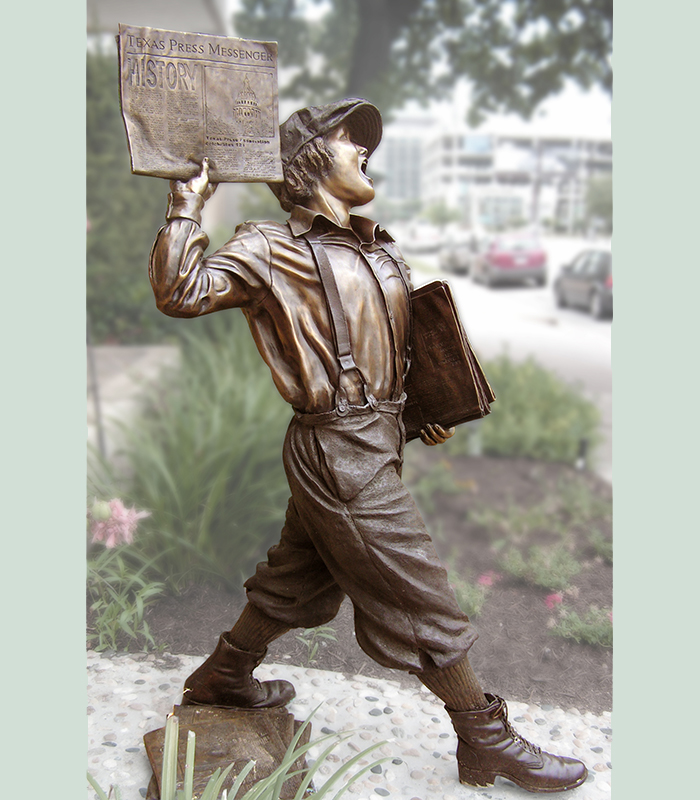
The Small Newsboy:
An edition of 100 the cost is $1,350. plus shipping.

You can read about the entire process by following this link of posts.
Extra, Extra, Read All About It
Extra, Extra, Read All About It
Bridgette Mongeon © 2004
Houston Tribune October 2004
It does not matter what your age; everyone recognizes the cry of “Extra, Extra, Read all About it”. The cry causes us to pay attention because we know that the information to follow is important. Originally it was the cry of the newsboys.
In 1833 Barney Flaherty answered this ad placed in the New York Sun newspaper. “To the Unemployed – – A number of steady men can find employment by vending this paper. A liberal discount is allowed to those who buy to sell again.” Instead of a man, ten-year-old Barney was hired and became the first newsboy. Over the years many children followed. The children, sometimes as young as six years old, bought the newspapers from the publishers and hawked them on the street corner.
Receiving the news in this age of technology is nothing out of the ordinary. In fact it seems that sometimes we take it for granted. We can get our news through radio, television, newspaper, the Internet, and we can even have it e-mailed to us without moving a muscle. In 1833 and the years to follow, the newspaper was the only way to get the news, and the newsboys were the important resource between the people and the press.
When newspapers began to “deliver” papers, newsboys turned into news carriers. My hometown of Western New York still has news carriers. The paper is not delivered by some anonymous man in a dark car who drives slowly down the street, the sight of which, at 5:00 a.m., makes you feel a bit cautious, until you notice the car seems to be spitting papers from its dark interiors. These projectiles land in the ditch, others in the flowerbed, some do make it within ten feet of the front door. This is what our newspaper delivery system has turned into- anonymous, cold, and unfriendly.
It is not so in some towns. My hometown in Buffalo, New York, still has news carriers that deliver your newspaper. Oftentimes the paper is delivered inside your screen door. Delivering papers is not an easy task. The young child must get up early to not only receive the papers hot off the press, but also to deliver them, and this must be done in all sorts of weather. In the blustering blizzards of Buffalo, winter snowstorms could often cover a small child. But, no matter what the weather, the paperboys always delivered the paper. As far as I know they still do today.
These eager and honest entrepreneurs not only delivered the papers but also collected the money that you paid for your subscriptions. Knowing the paperboy wanted to be paid, your weekly face to face encounter would be announced by any family member not in charge of the checkbook. The shout would ring, ” It’s the paper boy.” Upon receiving payment politely, the paperboy would hand to you your little stamped receipt to show that you have paid. The thought of the paperboy gives me the warm fuzzys. I hope that paperboys never go away. The last bit of nostalgia and intimacy with the media, young entrepreneurs, trustworthy and dependable, a symbol of the company they work for, a delivery system with a friendly warm face that represented stability and our future. If Houston, Texas, still had paperboys I am sure people would order the paper just for that reason alone. I know I would. And then I could put the paperboy on my Christmas gift list because; well he would be that important.
When I was 13 I wanted a guitar very badly so I thought I would get a job. Much to my parents dismay I took up a paper route. I was not the only one that had to deliver the paper in the morning. My Dad toted me to my place of delivery and dropped me off. There I stood in that eerie light between night and day bundled up with boots, mittens and a muffler. I stood in the snow, my paper sack slung over my shoulder and contemplated the task ahead, as I watched my Dad drive away. Oftentimes, when I would walk my paper route, my heavy footprints were the first to be seen in the early snow. My back rejoiced every time I delivered each paper, the sack growing lighter on my shoulders. My job lasted 2 weeks. I don’t remember who held out longer, my Dad or I. But I am sure that the end of that short stint as a papergirl was a sense of relief for both of us. Yes, I did make enough to buy my guitar.
I have recently been awarded a sculpture commission to create a life size bronze newsboy for the Texas Press Association. They hope to place it at the state capitol building in Austin. As I prepare for this sculpture the research that I am doing on the newsboys is endless, but fascinating. I pull on my fondness and my own feelings about these boys for my creative inspiration. I decided to document the process of the sculpture and my research on my web site at www.creativesculpture.com/texaspress.html.
On the web site you can see and read about the entire process, from finding the model, a neighbor and dear friend’s son, Dustin Lee, through the thoughts and struggles of the creative process and the endless research to the final installation and celebration. To my surprise, teachers and educators introduced to the web site immediately began to see the site’s potential in becoming a viable education tool. In researching and discussing the importance of a newsboy, I introduce students to a very important part of history.
Because the children are reading my journal and following links to such subjects as the newsboys strike of 1899, the history of metal casting, headlines through history, they are being introduced to both history and reading. I have added a Students and Teachers section to each page of the journal with questions and links to help encourage the children in their education. As students become involved, I will also add sections to record the student’s involvement and comments.
Because the sculpture placement is intended for Austin, Texas, and the state capitol grounds, through the website journal, the students will become involved with the political process that the Texas Press Association will have to through to present it to the legislature. Who knows, maybe some students will take a field trip to the Austin State Capitol for the unveiling.
It has always been important to me to make sure children know that even though they are small, they can make a big difference. This newsboy sculpture not only depicts the strength and integrity of the newspaper industry, but is an image for children to look up to as well. These boys made a difference and the children of today can as well.
All written work is copyrighted and cannot be used, whole or impart,
without the written consent of the author.
A Life Remembered Helps Six Children Go Mad Over Art
Tribune July 2003
Bridgette Mongeon © 2003
The excitement on the children’s faces at the Mad Hatters Art Camp was enough to inspire any writer. The enthusiasm of the six special participants was especially delightful.
Nicholas Orozco, Chelsea Valles, Daniel Duron, Ever Reyes, Faith Pruneda, and Rosa Juarez, were all winners of the Ellen O’Neal Art Scholarship.
Each child, encouraged by Harvard Elementary’s art teacher Mr. Robertson, submitted art work in hopes of winning the competition, and the award of the $300 tuition for the two weeks at The Mad Hatters Arts Camp.
The Ellen O’Neal Art Scholarship was developed by Jazzercize instructor Jane Luco and attorney Beatrice Mladenka-Fowler. Both women are friends of Jo Ellen Snow the mother of Ellen O’ Neal. Ellen O Neal was a vivacious artist who attended kindergarten and first grade at Harvard Elementary. She was also a student of artist Naomi Smulian, an art teacher at Mad Hatters Art Camp, and one of the camps founders.
Ellen never did get the opportunity to attend Mad Hatters Art Camp; she lost her battle with a brain cancer while attending Harvard Elementary. Both Luco and Mladenka-Fowler felt it was important to contribute to Ellen’s memory and created the Ellen O’Neal Art Scholarship. Teachers at Harvard Elementary determine who is eligible. The scholarship is based on financial need, artistic talent, good citizenship and a commitment from the parents concerning transportation.
“I’m very, very proud,” states Snow, “I greatly appreciate anything that keeps Ellie’s memory alive, both at Harvard Elementary and in the community.”
This is the third year that the scholarships have been awarded. The first year two scholarships were awarded. The second year the scholarships grew to one child in each age category, kindergarten through fifth grade. Luco and Mladenk-Fowler raise the funds for the scholarship yearly. Luco said her dream would be to send a boy and girl in each grade, funds permitting.
I had a chance to visit the camp and talk to some of the scholarship winners. I was greatly impressed with the quality of the camp and the teachers. They were all professionals in their field, giving the highest quality of instruction. This year’s theme of Around the World with the Mad Hatter also added geography and further education into the mix. The children were each equipped with their passports that were stamped as they traveled with their instructors to such far away places as Barbados, China, Greece and Portugal.
I met with one of the winners, Daniel Duron, in art teacher Cindy De Hart’s class. Daniel was in the Australian room busily working on a paper sculpture while fiddling with his colorful smock. Daniel said the camp was pretty good “you get to go outside and play and I do art and rhythm and music and the drums.” His eyes twinkled as he said drums. I asked him if he knew who Ellen O’Neal was and how he felt about the scholarship “I felt happy when I won, Ellie was a girl who died and loved to paint. She was a great artist. I want to be a great artist like her too.”
I met with Ever Reyes in Greece at the theater class held by Robb Brunson. Ever was a bit older than Daniel and seemed to know why this scholarship came to be. “The girl’s favorite thing was drawing and they did this to remind everyone of her.” Ever was also very expressive when describing his work. “I worked on the art picture all day, I added wallpaper and colored with crayons and then I thought about doing something with dinosaurs, so I made them stripes, then the night sky not really a night sky” I could tell he was really into this painting.
I stopped into two other classes before the last, Rhythm and Movement with Kristie Kiser and Nature Studies by David Petersen. As I talked with each teacher I was impressed with their ability to woo the children into creativity and learning. “It is as much about team work, and critical thinking as it is movement. We are teaching the kids thinking skills, how to be choreographers”, states Kiser. In Mr. Peterson’s class I was enlightened to hear a run down of what they did that day, as the children lined up at the door and handed in their colored paper chameleons. “We looked for grasshoppers to feed the fire belly toad, we looked at the baby caterpillars, and also talked about how our nose has a memory, and that my favorite smell was dill because it reminded me of my grandmothers farm. We also got to look at the butterfly wing under the microscope and name our snails.” I was beginning to wish I had arrived in this class a bit early to take part in some of the adventure and quickly ran to look at the butterfly before running to my next class.
The last class I visited was Terrence Karn’s music room. I arrived before the children and marveled at the 18+ drums lined up in front of chairs, along with two plastic waterbottles, a Rubbermaid container and plastic planters each with their own set of drum sticks. The children didn’t miss a beat in Mr. Karn’s class. I could see why Daniel’s eyes twinkled when talking about Mr. Karn and the drums. Scholarship winner, Chelsea Valles, was enjoying the opportunity of echoing the teacher’s rhythm on a drum.
Even though I did not get to visit all the classes nor meet all the winners, when I left Mad Hatters I felt like I had been on an adventure, and I had only been there a few hours. It must be wonderful to be a kid and have two weeks of this creative experience. For all the participants I am sure it would be a memory that would last a lifetime, and for six special children a life of a little girl that would be remembered.
The Ellen O’Neal Art Scholarship is maintained by the Houston Independent School District. To make a donation please send a check made payable to HISD, and mail to Snow and Whitworth, Attorneys at Law, 1148 Heights Blvd, Houston, Texas 77008.
To receive information about next years Mad Hatters Art Camp contact Claire Smith administrator at 832-618-1120.
All written work is copyrighted and cannot be used, whole or impart,
without the written consent of the author.
Heights Artist Helps Children With Cancer Through Artwork
Houston Tribune December 2002
Bridgette Mongeon © 2002
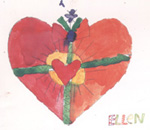
I first heard about Ellie’s artwork from her sister Meagan. One day while driving Meagan home from church, I was discussing the production process of my own sculptures that were packed neatly in a box on the floorboard of my van. “I am familiar with sculpting,” Meagan replied, “My sister’s an artist”. I was intrigued, wondering about her sister’s art. Moments later I was in Meagan’s home and viewing that very artwork. Watercolors were framed and hung with honor in the hallway of their home; colorful animal figurines were corralled on end tables. Stain glass art hung in the window, while reproductions of Ellie’s art sat upon the dining room table. Soon Ellie’s mom, Jo Ellen Snow, and I were enthralled in a conversation about Ellie’s art.

Ellie’s painting titled, “Gift Heart” was first reproduced as gift cards. She felt honored to have her artwork chosen by the MD Anderson Children’s Art Project. A reproduction of an artist’s artwork at any age is quite an accomplishment. It is a tremendous honor when you are only 7 years old. Ellie received a two hundred-dollar honorarium and recognition for her efforts, however, she never would have the opportunity to see the effects and demand that her artwork created. Within a few days of viewing the printed note cards Ellie O’ Neal lost her ferocious fight with a brain tumor that held so tightly to her little body. On January 17, 2001 Ellie passed away. The Children’s Art Project worked diligently to reproduce the jewelry created from Ellie’s art so that family members at Ellie’s funeral could wear it proudly.
Since Ellie’s death, many Height’s residents have honored her. Orange ribbons appeared throughout the Heights. Ellie’s Elm is planted in Donovan Park, in the very spot that she held her third year birthday party, the first birthday party to be held in the then newly built park. Harvard Elementary has a Japanese maple, a bench with painted tiles from her classmates, and a courtyard dedicated in her memory. The street median of Heights Boulevard has a sweet gum tree planted by the Houston Heights Association that was donated by the law firm of Snow and Whitworth, Ellie’s mom’s law firm. “I can see the tree from my window,” states Ellie’s mom. When driving down Heights Boulevard one will notice the tree still has its orange ribbon.
Ellie studied for three years with artist Naomi Smulian at Arts Studio on the Boulevard. Naomi describes Ellie’s artwork as being very sensitive, “Ellie had a calculated sense of design. She loved color and had her favorites,” states Ms. Smulian.
Ellie’s watercolor, “Gift Heart” is now being produced as a Radko Christmas Ornament. Gayle Goodwin, communications director of the Children’s Art Project, states that the ornaments are flying off the shelves. There is discussion of reproducing yet another piece of Ellie’s art for the Children’s Art Project.
“Anytime you buy artwork from the Children’s Art Project, it is a gift that gives twice. All the proceeds from the artwork go to fund the children’s projects at MD Anderson, including the art program,” states Ms. Goodwin. In the 29 years of its existence 15 million dollars has been given back to the program. Ellie certainly has made her mark on the Heights, the art community, and the many children at MD Anderson. Ellie’s “Gift Heart” just keeps on giving.
If you would like to purchase any of Ellie’s artwork or any other artwork from the Children’s Art Program it can be seen at www.childrensart.org or ordered at 1 800-231-1580.
All written work is copyrighted and cannot be used, whole or impart,
without the written consent of the author.

